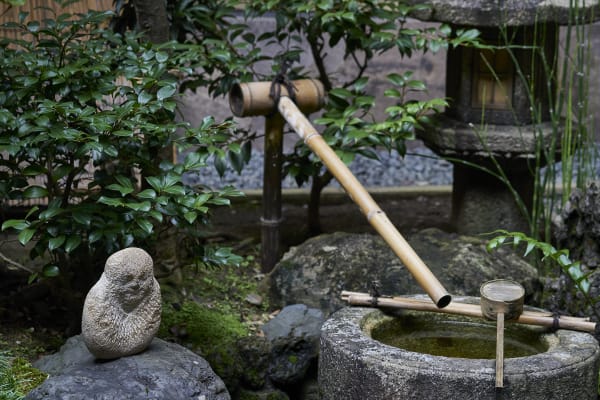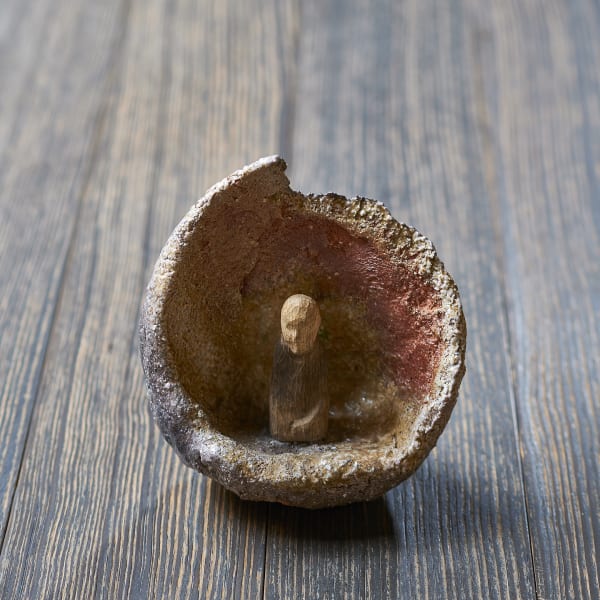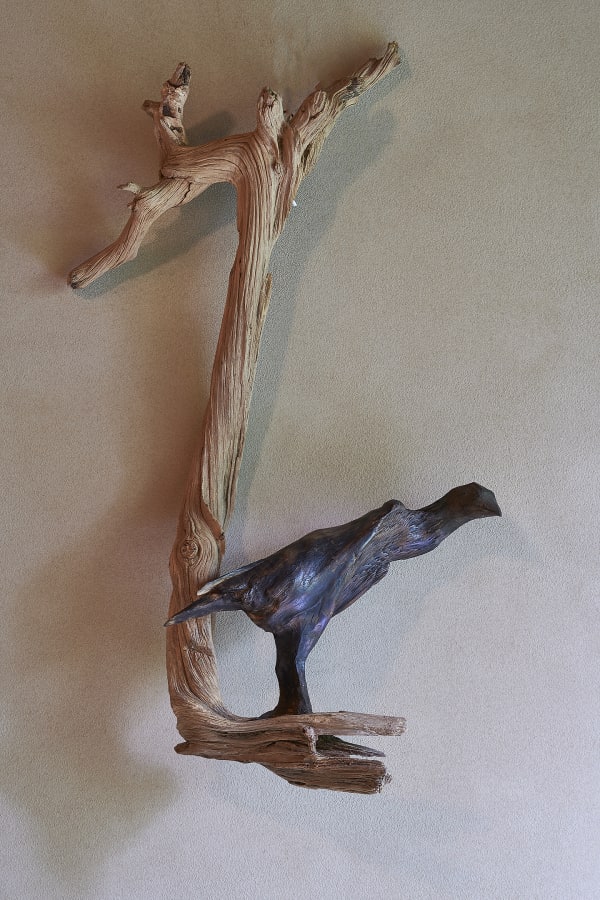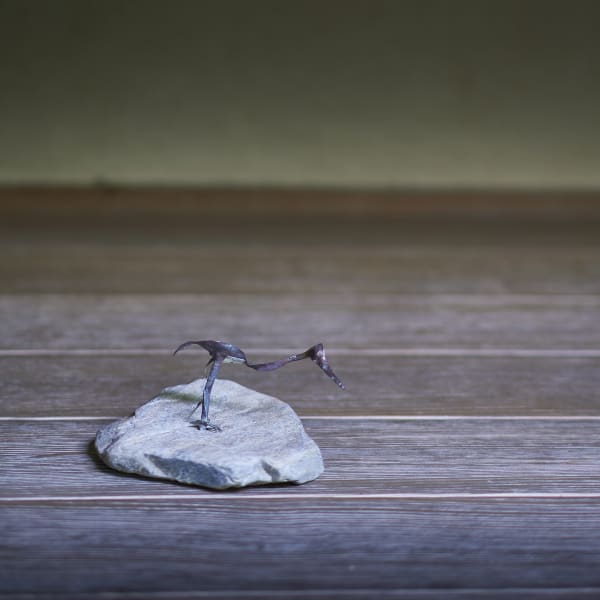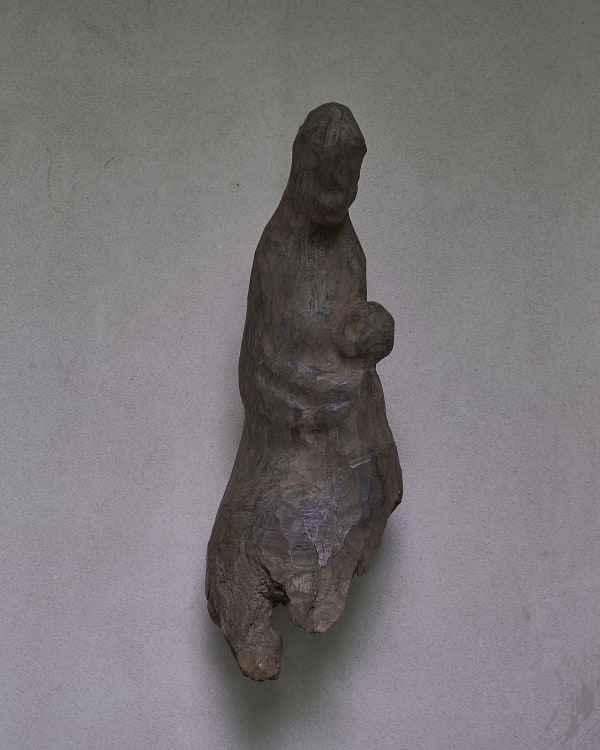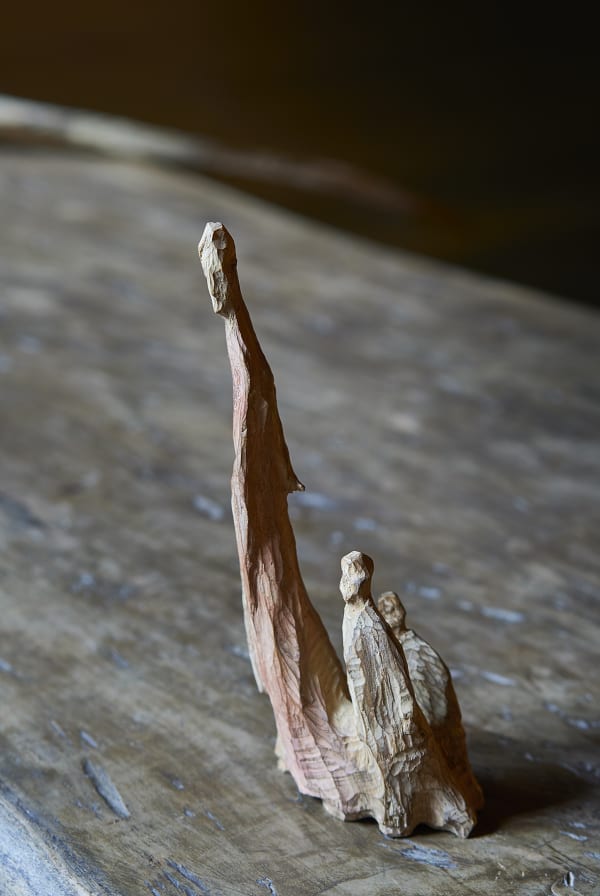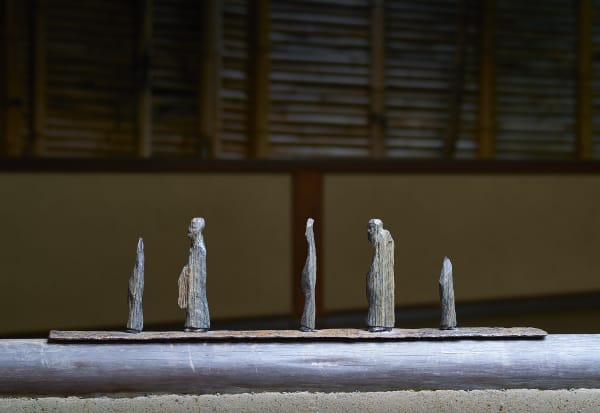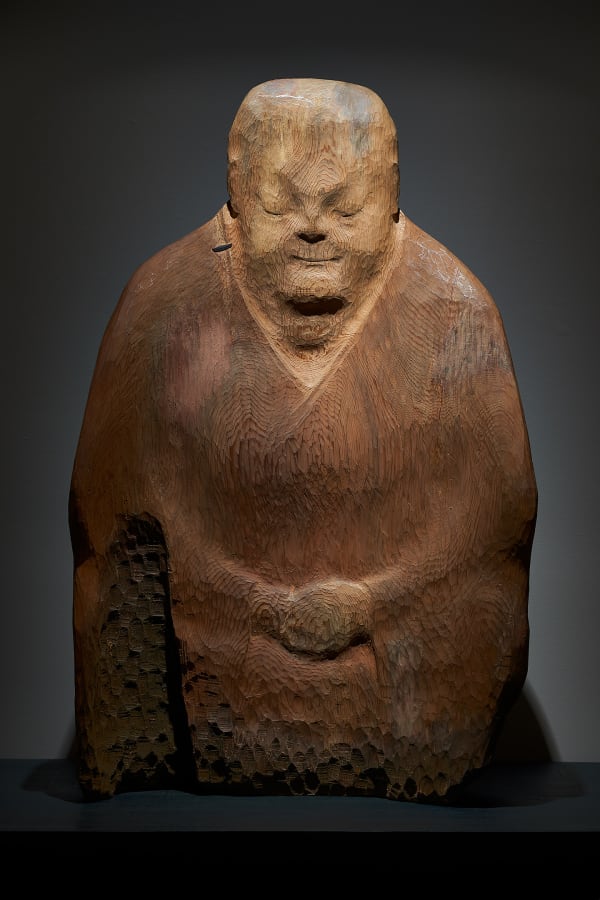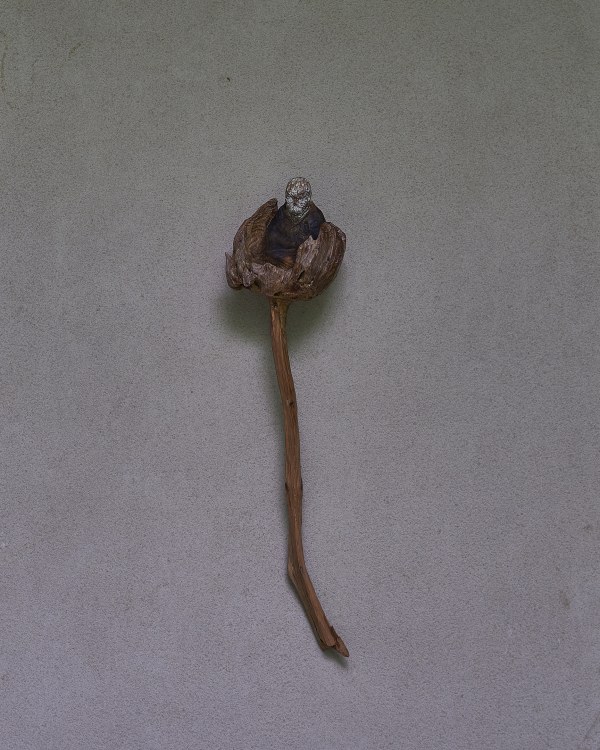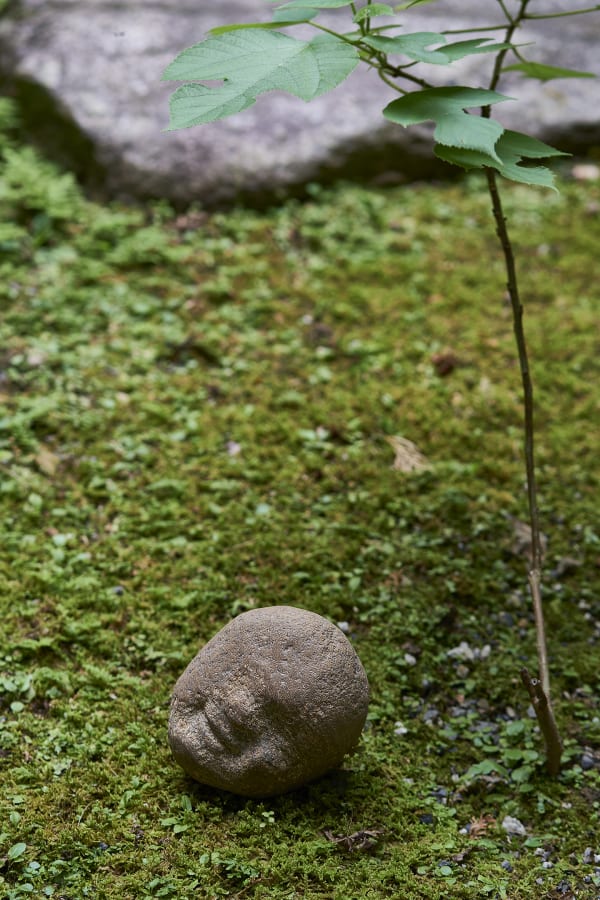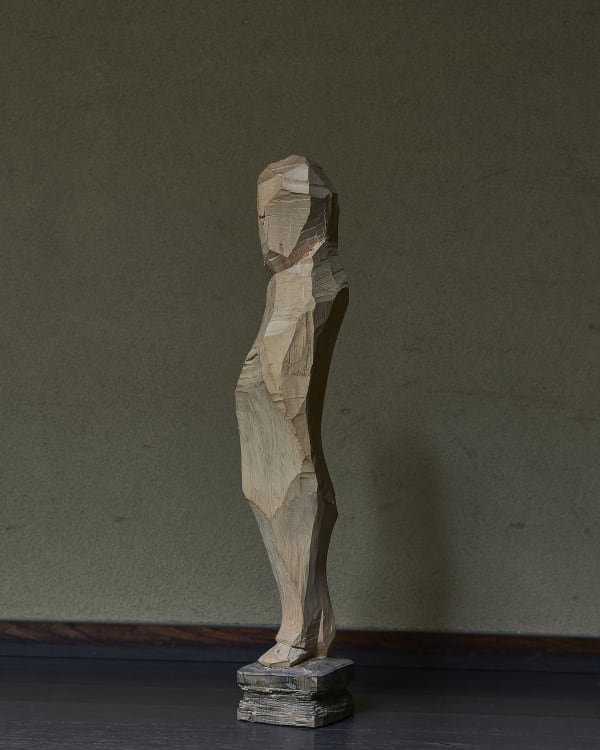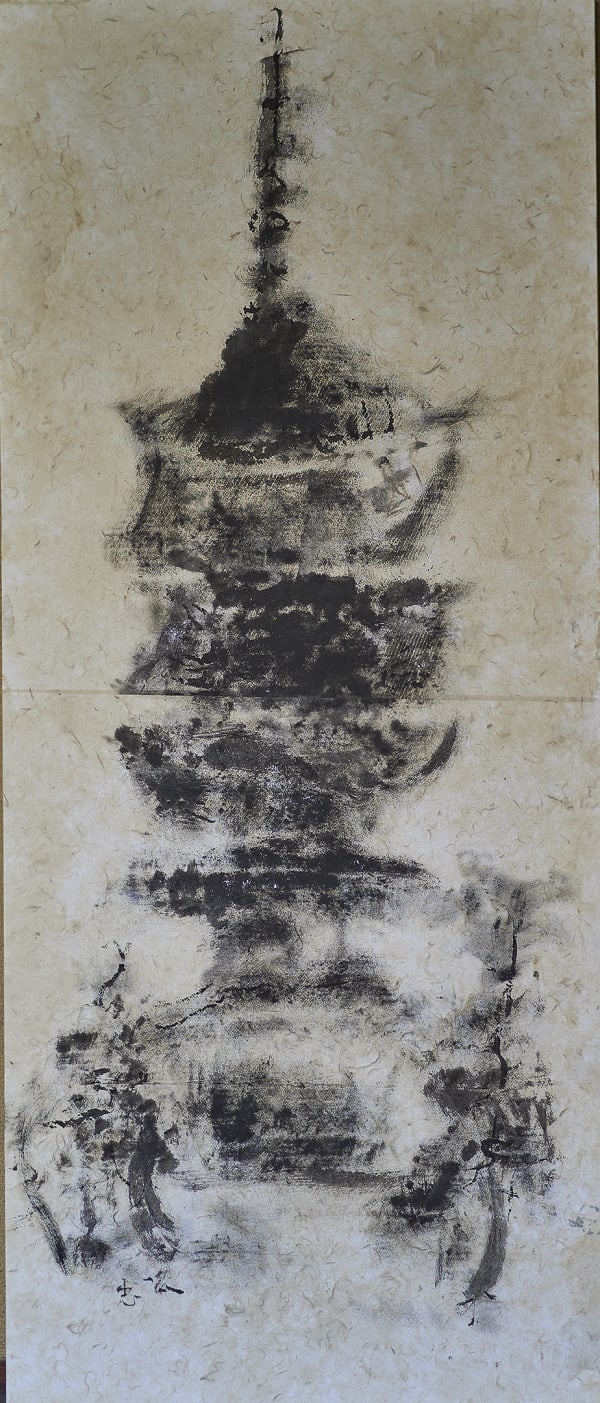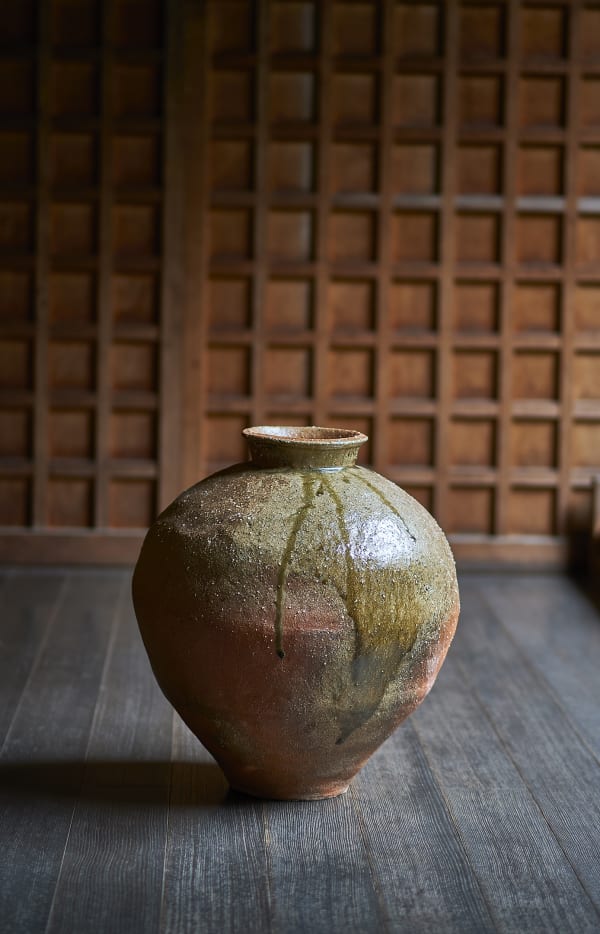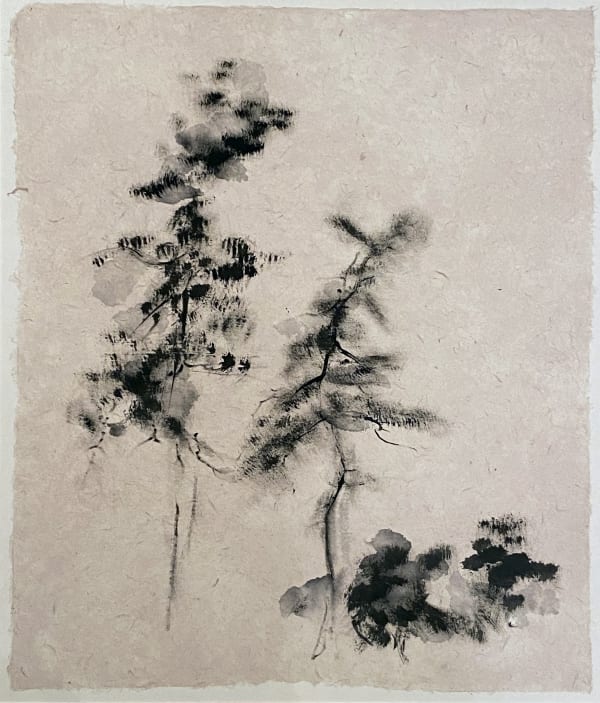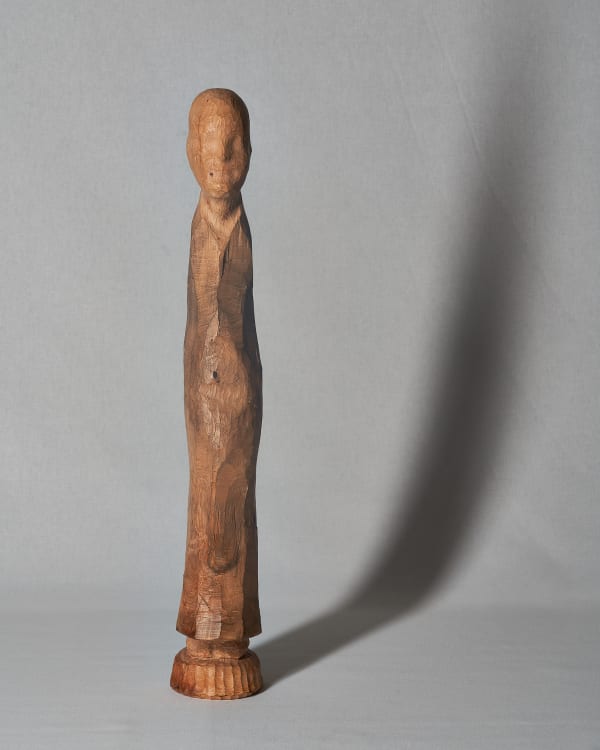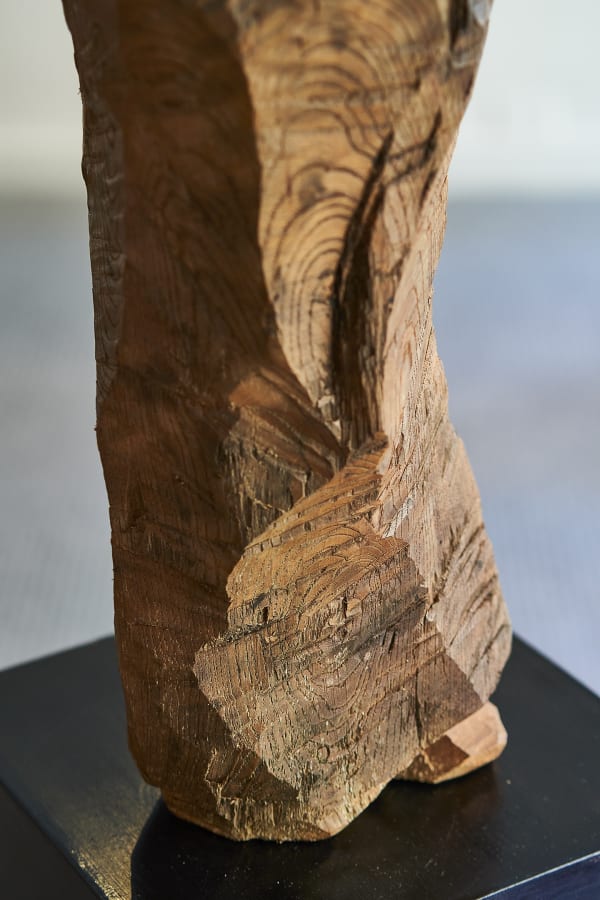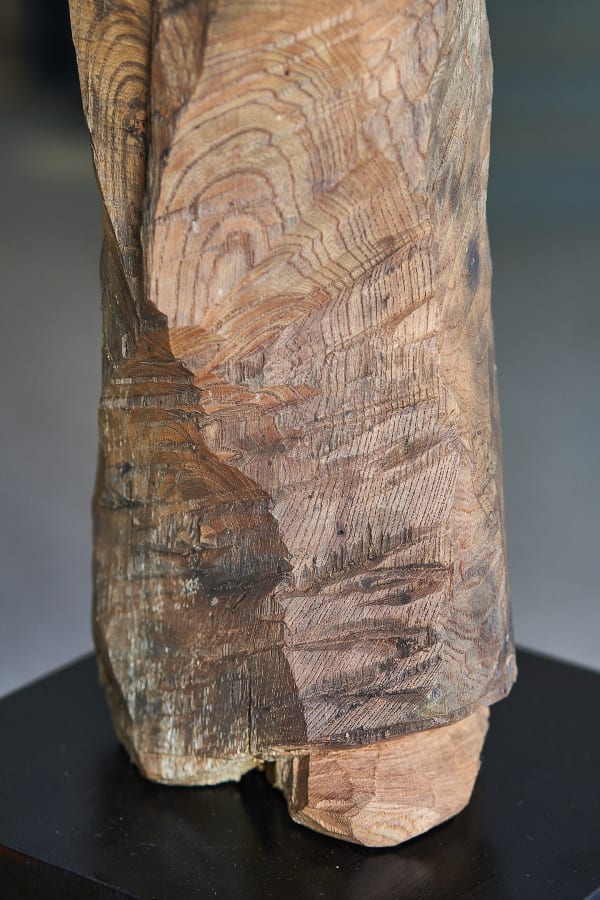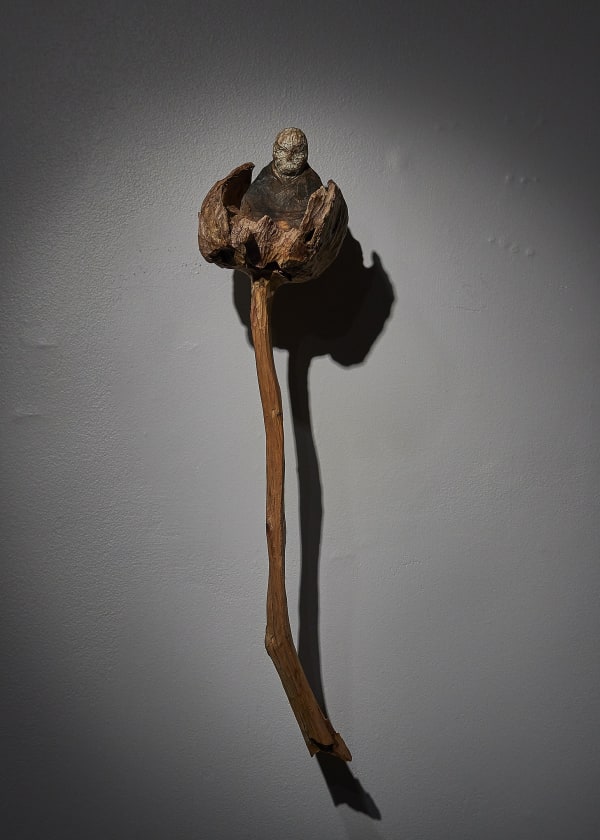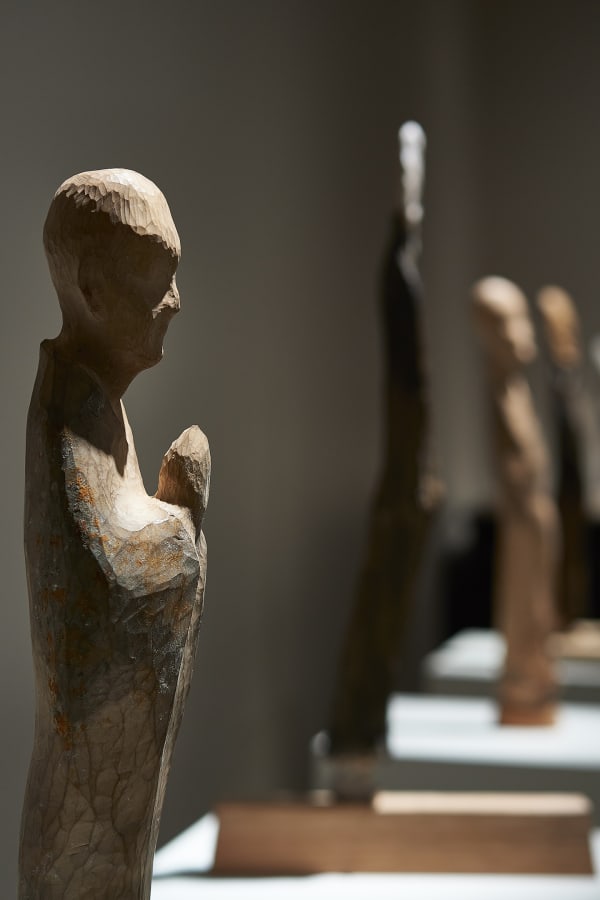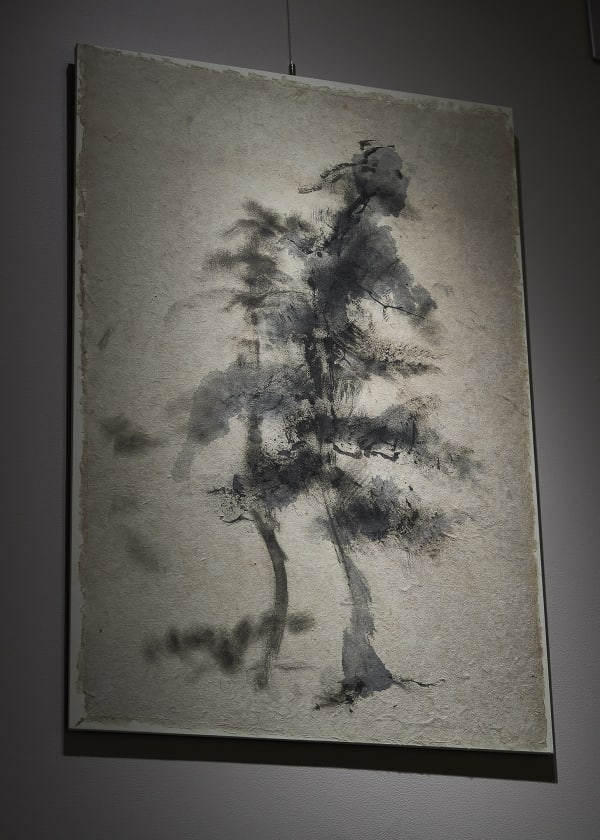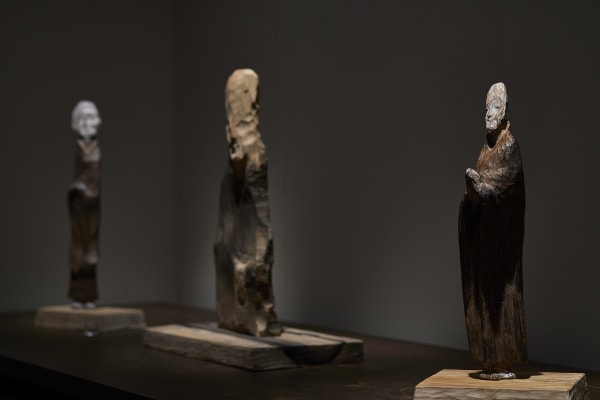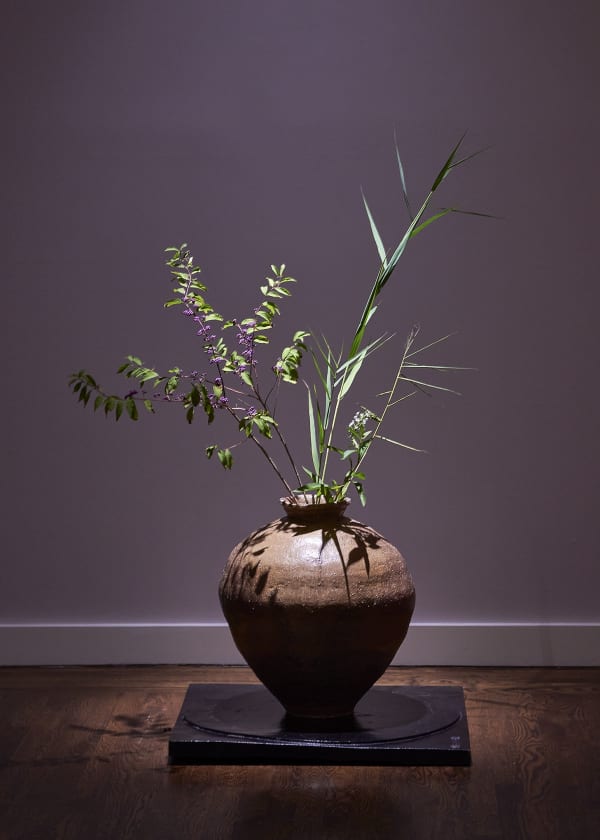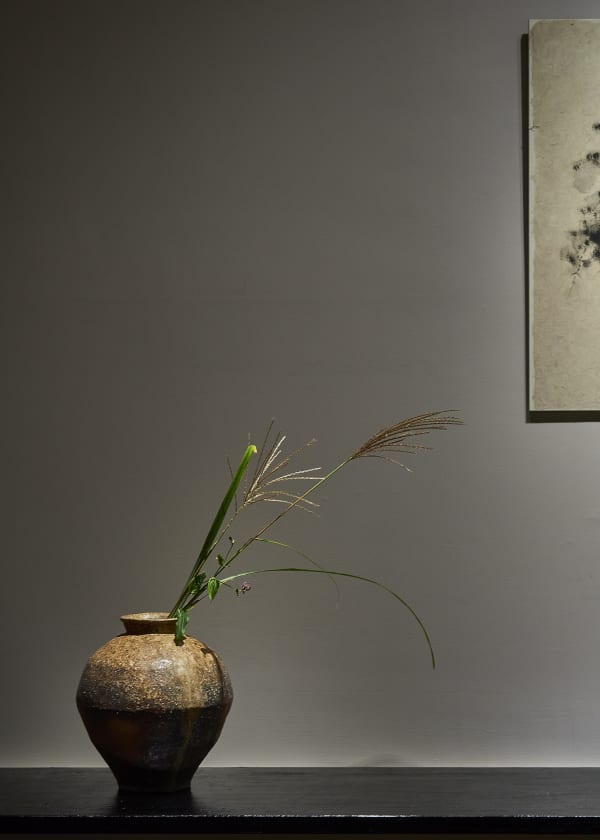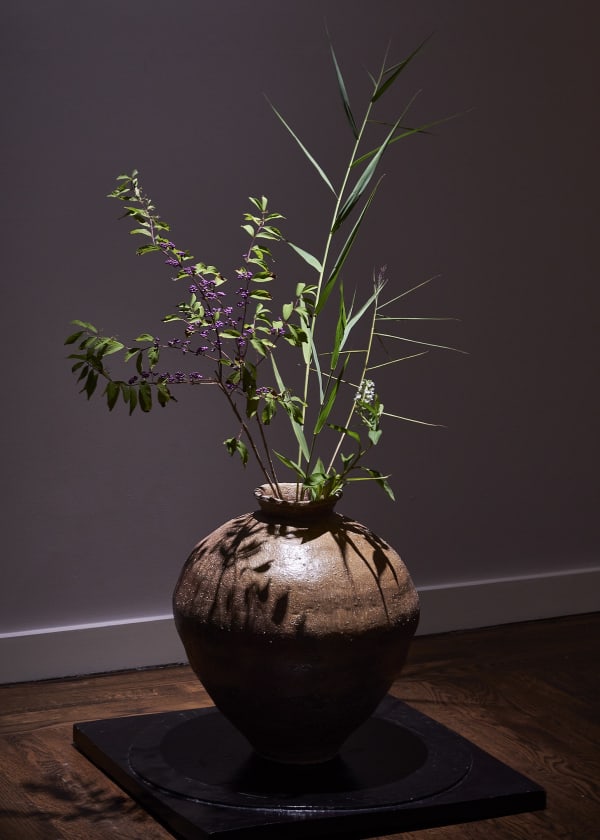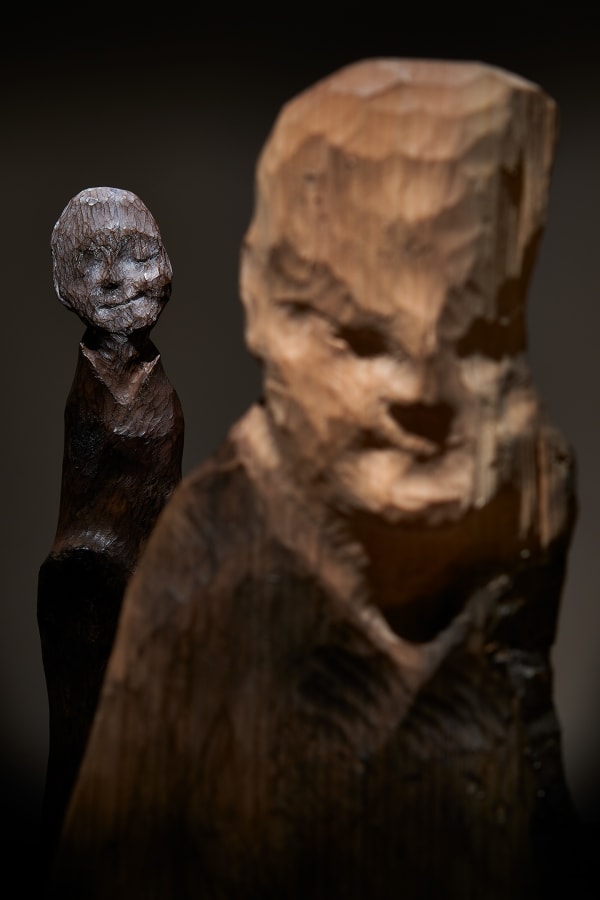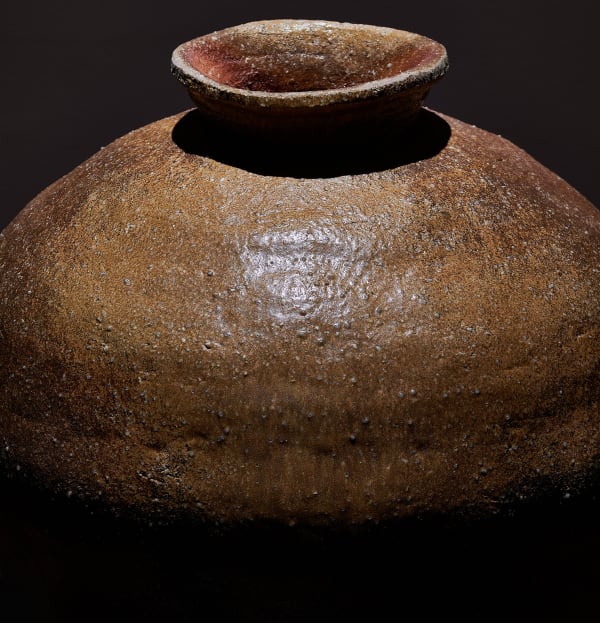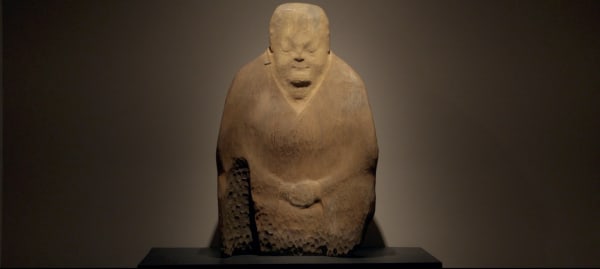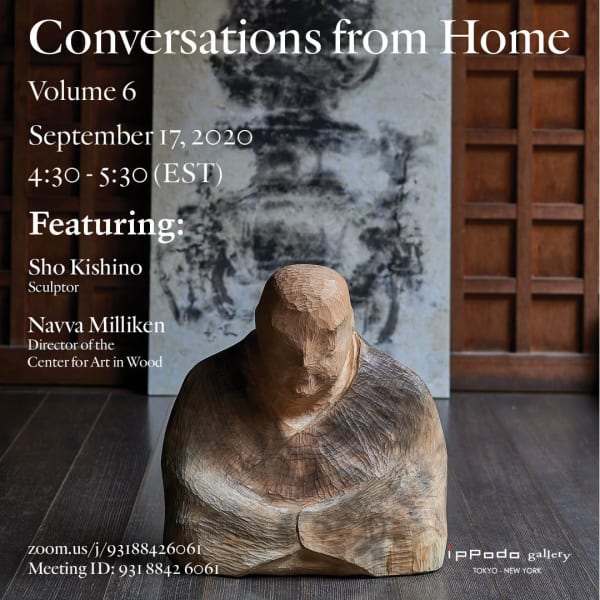Samsara 輪廻:: Sculptures by Sho Kishino
Sho Kishino lives a life of Zen which is reflected in his work. In his sculptures, we are able to discern the true essence of existence.
The sound of footsteps, the rounded shoulders of a priest, the crowing of a gamecock, a mother’s gentle smile…these works possess not only sorrow, but also humor. Light and shadow coexist. Using wood from old temple or shrine buildings, pine, cedar driftwood, or stones he finds in the Kizugawa river in his hometown of Kyoto, he gives them new life. Carving them down to perfection, he exposes the shape of something living.
In his youth he became influenced by Giacometti’s (1901–1966) way of looking. Giacometti drew things exactly as he saw them and believed that by removing the outline of an object, it was possible to evoke the essence of their being. Struggling to understand the difference in the way of looking across cultures, between East and West, Kishino came to the conclusion that ‘In Japanese sculpture, material is not added, but subtracted, thereby giving birth to “space”.’
This year the whole world is threatened by a virus. Sho Kishino’s sculptures offer the viewer peace of mind. They contain a prayer and offer salvation.
This exhibition, alongside Sho Kishino’s work, will include ink paintings by his father, Tadataka, and pottery by his brother, Kan. We hope that their works will allow you to appreciate the importance of family.
Shoko Aono, Ippodo Gallery
NEW YORK, NY – Ippodo Gallery New York is pleased to announce the inaugural exhibition of our newly reopened galleries with Samsara: Sculptures by Sho Kishino. This show of over forty works, the artist’s second solo exhibition in the United States, will be on view from September 10 to October 8, 2020, by appointment only. Sho Kishino (b. 1972) was raised in Kyoto, and many of the themes of his works reflect the city’s role as Japan’s cultural capital and center of traditional arts, deep history with Zen Buddhism, and connection to surrounding nature. Kishino’s study of Zen and engagement with Buddhist practitioners and monks, as well as the temples and shrines that have formed the backdrop of life in Kyoto for centuries, have influenced every facet of his art. His use of natural and reclaimed materials, from river stones to bog-wood to timbers from old temples, yokes the natural world to the subtle, subtractive aesthetic of his sculptures. Kishino has cited the work of the Swiss artist and sculptor Alberto Giacometti (1901–1966) as a significant influence on his style and practice. Giacometti strove to recreate his impression of his subjects, and believed that by blurring the borders of his sculptures he could evoke his subject’s natural essence. Studying Giacometti’s works, Kishino concluded that sculpture should not be solely concerned with form. Rather, Kishino places greater importance on the dynamic between the object’s internal and external space. He uses light and shadows, empty space and subtle interventions to create expressions, meanings, and relationships between time and nature that extend beyond the strictly physical forms of the works.
Kishino sources many of his materials from ancient temples, historic samurai residences, and the banks of the Kizu River. By rediscovering these objects and materials, and repurposing them into works of art, Kishino gives them renewed life, setting them into motion along a new cycle of existence and meaning. Kishino’s works draw the viewer into a meditation on the cycle of the passage of time, the forces of nature, and the layers of intervention by the artist’s hand. This exhibition is titled Samsara: Sculptures by Sho Kishino. Through these pieces, the artist explores themes of creation, renewal, and spiritual awakening. In Buddhism, samsara indicates the beginningless cycle of birth, life, death, and rebirth. It is upon realizing this fundamental reality that Buddhists may free themselves from the chain of rebirth and become awakened spiritual beings. Kishino has described his creative process as a search for the light of the Buddha’s teachings, a light that can help heal unease in the world. Kishino’s father, Tadataka, himself a practitioner of Zen Buddhism, is a master of Suiboku-ga, traditional ink-wash painting. Tadataka’s paintings, four of which are included in this exhibition, express themes of transience, quietness, and subtle movement. Displayed with Sho Kishino’s sculptures, the paintings serve as a backdrop against which the three-dimensional works exist; with their shared use of restrained imagery to hint at hidden representations, the paintings and sculptures also converse with one another. Kishino’s brother Kan, a traditional ceramicist, has also contributed several works, which are coated with glazes that are naturally created by wood ash in the kiln; the random patterns that occur through this technique suggest the limits of human control over natural forces. Kan and Sho collaborated for this exhibition to include three sculptures that bring wood and ceramics together to highlight the interplay between deliberate actions and natural phenomena.
Together with Ippodo Gallery, Kishino presents these meditative works as a prayer, an offer of salvation to overcome these challenging times.

